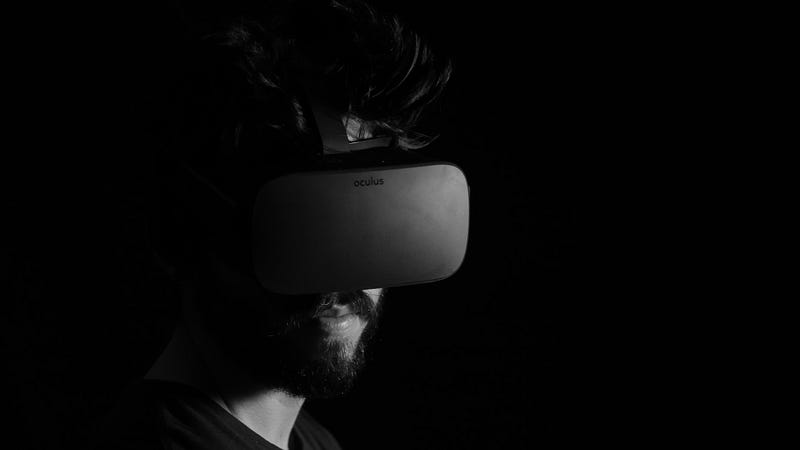Exploring the Impact of Virtual Reality on Grieving Processes
Written on
Chapter 1: A Digital Reunion with the Departed
In February 2020, a poignant documentary aired in South Korea that depicted a scene one would never expect: a mother reconnecting with her daughter, who had passed away four years prior. In a virtual reality (V.R.) setting, Jang Ji-sung engages emotionally with Nayeon, who tragically lost her battle with leukemia at just seven years old in 2016.
The emotional weight of this moment is palpable, as Jang Ji-sung dons V.R. goggles and gloves, striving to touch the digital representation of her daughter. Intercut with this heart-wrenching scene are glimpses of her in reality, standing before a massive green screen, while her husband and two children observe her emotional journey.
"I Met You," produced by Munhwa Broadcasting Corporation, took eight years to create. The park where Jang and Nayeon meet mirrors a real location they frequented, and the girl's likeness was reconstructed using images and motion capture techniques. Their dialogues stem from family memories and accounts.
Yet, beyond the technological marvel and emotional resonance lies a critical question: how will such advancements reshape our approach to grief?
> Grief is an arduous journey. By introducing illusions, we may mistakenly believe we can alter or reverse our grief, but that is a false hope. The reality remains unchanged; the loved one is gone. Once the V.R. experience concludes, the void of loss becomes starkly apparent.
For Jang Ji-sung, even though she recognizes the experience as virtual, it feels extraordinarily real. Onlookers witness her affectionate gestures, rekindling emotions long buried. This complicates her journey, as she must once again confront the reality that her daughter is not there, despite the fleeting moments of connection.
As technology evolves, scenarios like this are becoming more prevalent. Companies are developing chatbots that can replicate conversations with deceased individuals, and researchers are exploring ways to upload human consciousness to digital platforms.
While Nayeon's virtual avatar follows a scripted interaction and lacks independent agency, the potential for blending various technologies to engage with deceased loved ones is becoming increasingly viable.
Section 1.1: The Nature of Grief
Death is an irreversible experience that often takes us by surprise. Historically, death was a common occurrence, integrated into daily life—people frequently succumbed to illnesses like flu or diarrhea at home. However, advancements in healthcare have led to a societal avoidance of the topic, creating an illusion of near-immortality.
Nevertheless, the reality of death remains unavoidable, and we must navigate the grieving process. Grief is not merely an obstacle; it is a profound experience that requires acknowledgment and understanding.
Psychiatrist Elisabeth Kübler-Ross, in her seminal work "On Death and Dying," identifies five stages of grief: denial, anger, bargaining, depression, and acceptance. These stages may manifest in any order, and not everyone will experience all of them, nor will they follow a defined timeline.
However, utilizing technology to reconnect with the deceased can disrupt these stages and potentially hinder the grieving process.
Subsection 1.1.1: The Dangers of Virtual Connections

This practice poses significant risks, as it is built on a façade that can feel overwhelmingly real. Unlike maintaining a memory of a loved one through photographs or keepsakes, engaging with a virtual representation blurs the lines of reality and delusion.
With virtual reality, individuals can simulate interactions with those who have passed—saying "goodnight" or "goodbye" as if they were still alive—effectively altering the essence of grief. It ceases to be a natural process and morphs into a cycle of self-inflicted pain and denial.
Chapter 2: The Implications of Extended Grief
In the "Be Right Back" episode of Black Mirror, a woman grapples with the death of her boyfriend by purchasing a cyborg replica of him, attempting to fill the void. Yet, even within this artificial relationship, grief lingers, akin to the end of any meaningful connection.
If technology enables the resurrection of relationships that have concluded, the implications could be even more troubling. If virtual reality traps individuals in a repetitive cycle, preventing them from moving forward, is that truly a beneficial solution?
As we ponder the future of such technologies, it's vital to listen to those who have undergone these experiences. Jang Ji-sung reflected on her time with her daughter in the V.R. space, stating, "Maybe it's a true paradise. I met Nayeon, who called me with a smile, for a very short period of time, but very happy. I believe I had the dream I always wanted."
The first video, "Facing the Fear of Death in Virtual Reality," delves into how V.R. can confront the often-taboo subject of death, allowing users to explore their fears in a controlled environment.
The second video, "The Moment Mum & Dad 'Meet' Their Late Son Again: Coping With Grief Through VR Tech," illustrates how families utilize V.R. technology to cope with loss, providing insights into the emotional complexities involved.
Thank you for engaging with this exploration! For more insights, consider following my work or subscribing for updates. Your support is invaluable, whether through reading or a small contribution.